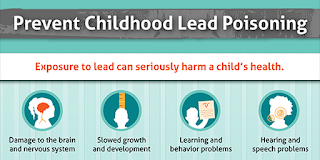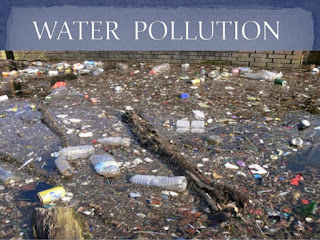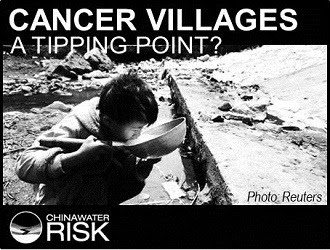Lead Pollution: The #1 Childhood Environmental Health Threat Globally
Fact Sheet: What is the #1 Childhood Environmental Health Threat Globally? - The Pollution BlogThe Pollution Blog: "“
Lead Poisoning from improper automotive battery recycling activities is the number one childhood environmental health threat globally”.— Dr. Jack Caravanos, CUNY professor and research lead at Blacksmith Institute for a Pure Earth
While lead pollution can result from a number of activities, the improper recycling of used lead-acid batteries (ULABs) is the leading source. Lead exposure is estimated to account for 143, 000 deaths per year, or 0.6% of the global burden of disease, with the highest burden in developing regions. Children are most at risk. Read the story of Seynabou and the five children she lost
Here are some FACTS ABOUT LEAD:
There is no known safe level of lead exposure.
The CDC has adopted 5 µg/dL (micrograms /deciliter) as the point at which to trigger public health actions.
In the U.S., about 500,000 U.S. children are estimated to have a blood lead level of at least 5 µg/dL. Average blood lead level in the U.S. is 1.8 µg/dL. In some of the world’s worst polluted places, we have found levels as high as 234 µg/dL in children.
Lead has been identified as one of the top six toxic threats.
Lead exposure is entirely preventable.
Statistics:
Childhood lead exposure is estimated to contribute to 600,000 new cases globally of children with intellectual disabilities every year.
Lead exposure is estimated to account for 143, 000 deaths per year, or 0.6% of the global burden of disease, with the highest burden in developing regions.
In a review of 242 studies of known chemically contaminated sites, lead was the primary contaminant in 57 (25%) studies, representing 8,345 exposed children.
Health Effects:
Lead is a potent neurotoxin, causing lower intellectual capacity, neurological damage, and cardiovascular disease, amongst other problems.
Children are the most vulnerable. Lead can affect nearly every system in a young developing body, in particular the brain and nervous system, with devastating and sometimes permanent health consequences.
The presence of lead in children lowers I.Q. by an estimated 4-7 points for each increase of 10 μg/dL.
In adults, lead poisoning can lead to increased risk of high blood pressure and kidney damage. In pregnant women, lead poisoning can cause miscarriage and stillbirths.
Lead exposure often occurs with no obvious symptoms as lead accumulates in the body over time. Lead poisoning therefore frequently goes unrecognized.
Sources:
The improper recycling of used lead-acid batteries is arguably the #1 childhood environmental health threat globally.
Of the six million tons of lead that are used annually, approximately three quarters go into the production of lead-acid batteries. Of these batteries, 97% are eventually recycled to retrieve the lead.
The improper recycling of ULABs happens in every city in the developing world. These are small mom-and-pop operations. Batteries are often broken up by hand, often in backyards, and smelted in kitchens.
Lead pollution can also be a result of mining, smelting, manufacturing and other activities, including the continued use of leaded paint and leaded gasoline in some countries.
Examples of the Lead Problem:
In Senegal in 2009, a lead poisoning outbreak went undetected until 18 children died. The highest lead levels recorded in children between one and five years-old was 158 µg/dL.
In Nigeria, the high price of gold prompted a mini gold rush in 2010, and villagers took to mining the lead-rich ore. This resulted in the world’s worst outbreak of lead poisoning. Over 400 children were killed. Lead levels as high as 150µg/dL were recorded.
In Mexico, where many of the country’s 50,000 potters use toxic lead-based glazes, the average blood lead levels for children and their families in artisan communities is 26 to 40 µg/dL.
In Cinangka, Indonesia, a playground near the primary school was so toxic that parts of the field had lead levels that measured 123 times above the (WHO) standard.
In Vietnam, toxic craft villages have left a damaging legacy.
In Haina in the Dominican Republic, a hotspot of lead contamination because of improper battery recycling, we have seen blood lead levels as high as 234µg/dL.
In Kabwe, Zambia, we found children with severely high blood lead levels. In 2015, our cleanup work in Chowa, Kabwe, freed residents from dangerous lead exposure in their homes and yards for the first time in 100 years. Read more about our Kabwe cleanup"
'via Blog this'




Comments
Post a Comment